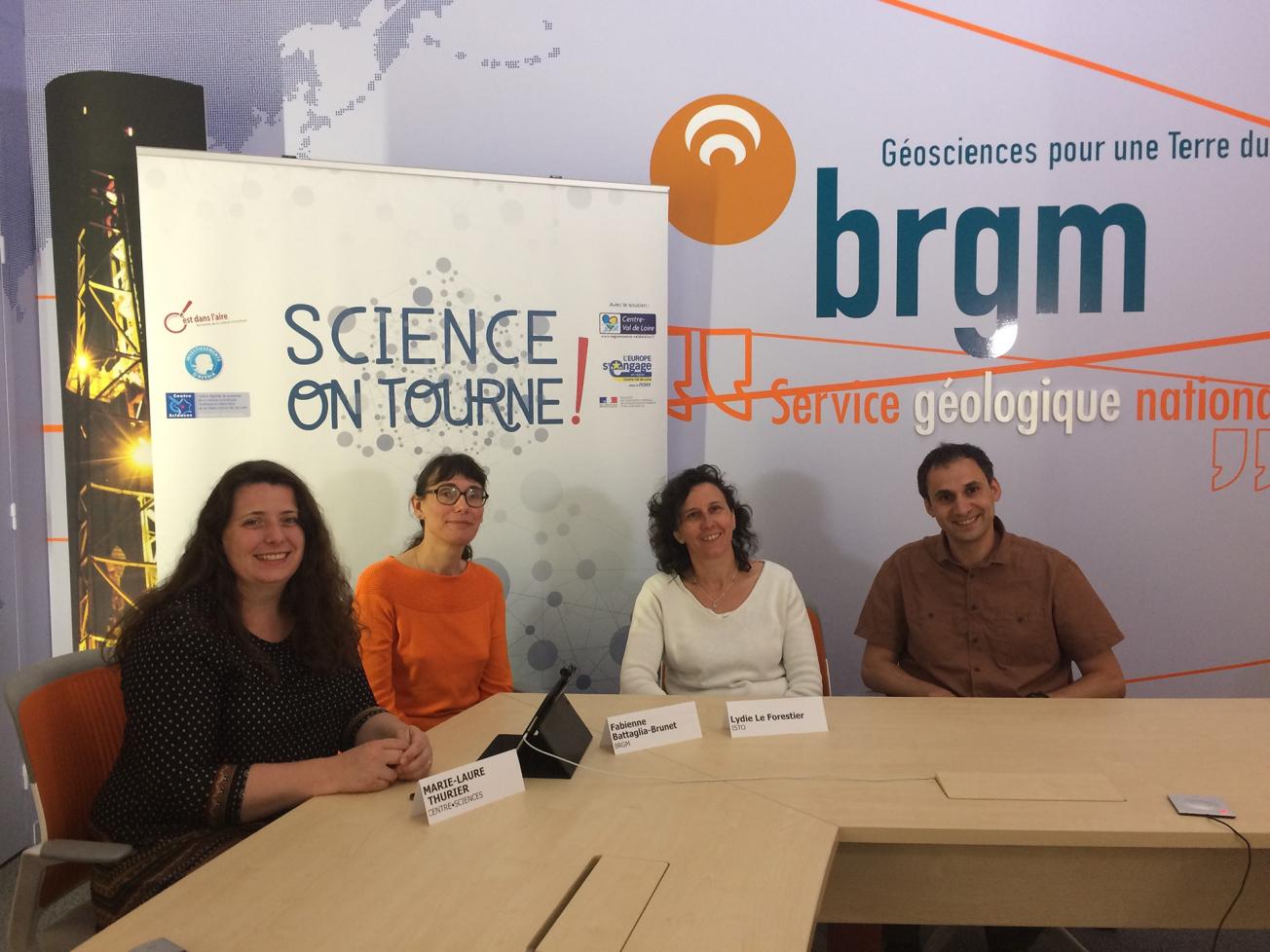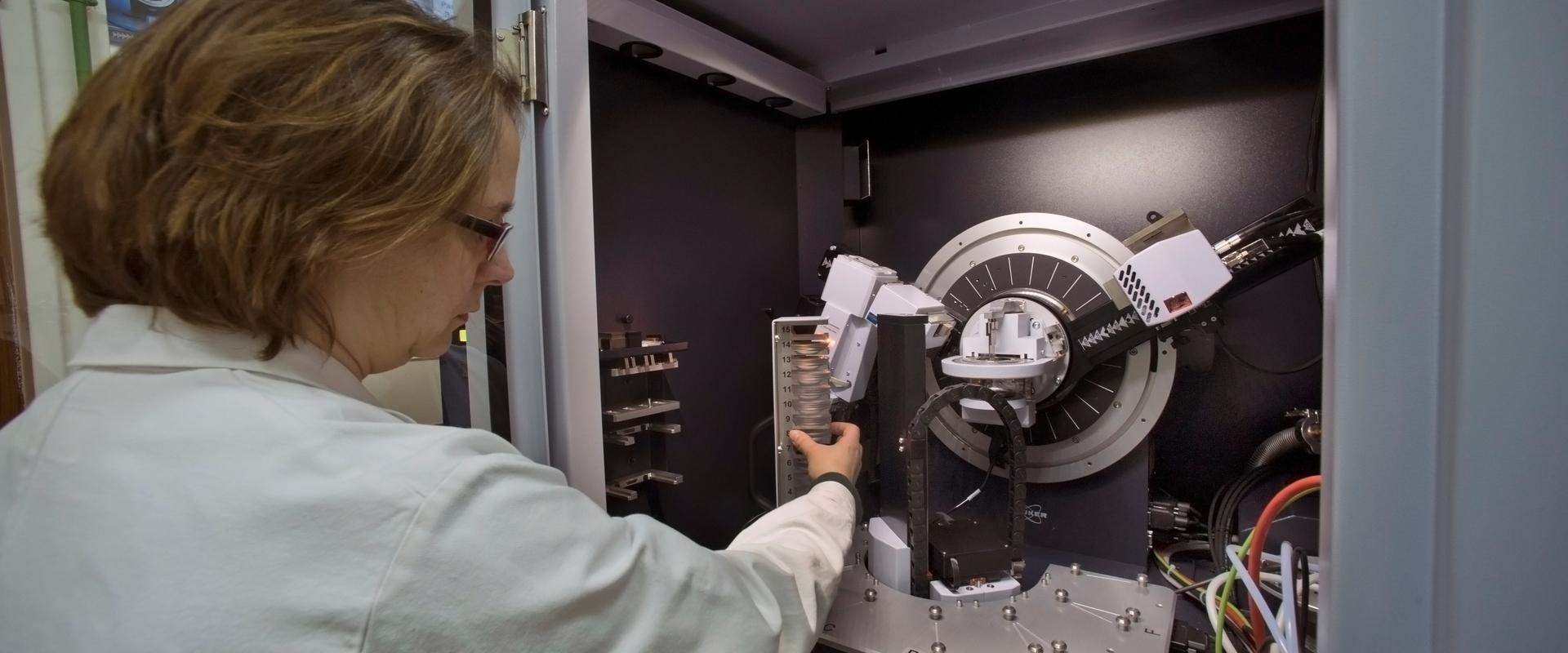
From left to right: Marie-Laure Thurier of Centre•Sciences, Fabienne Battaglia-Brunet of BRGM, Lydie Leforestier of ISTO and Djamel Hellal of Centre•Sciences, during the webcast “Using plants for soil remediation”.
© BRGM - Agnès Noel
On 22 May 2018, Fabienne Battaglia-Brunet, a microbiological engineer-researcher at BRGM and member of the PhytoSELECT project, which is run jointly by BRGM and the Institut des Sciences et de la Terre d'Orléans (ISTO), interviewed Lydie Leforestier, a teacher-researcher at ISTO and Marie-Laure Thurier from Centre•Sciences, for a “Science on tourne!” webcast.
This webcast, during which the two speakers discussed their work on soil remediation using plants, was held on the premises of BRGM. The two classes of high school students participating in the webcast also had questions for the two scientists.
“Science on tourne!”
“Science on tourne!” is an initiative of the association “C'est dans l'aire – Territoires de la Culture Scientifique”. “C'est dans l'aire” is a prize-winning project of the French government’s Investissements d'Avenir (investing for the future) programme, whose action is coordinated locally by Centre•Sciences, the Scientific, Technical and Industrial Cultural Centre (CCSTI) of the Centre-Val de Loire Region, with the support of the Regional Council, the Orleans-Tours Academy, the ANRU and the European Regional Development Fund (ERDF).
PhytoSELECT: plants and contaminants
The PhytoSELECT joint project brings together five partners from the Centre-Val de Loire Region, ISTO, the Laboratoire de Biologie des Ligneux et des Grandes Cultures (LBLGC), Cités, TERritoires, Environnement et Sociétés (CITERES), IDDEA and BRGM, which are all committed to an innovative approach to the phytomanagement of contaminated post-industrial sites. The project studies phytostabilisation techniques with the particular aim of using resilient plants to help rehabilitate brownfield sites and other sites contaminated by trace metals.
The instrumented tank in BRGM's hall for experimental pilot projects is used to study biogeochemical and microbial reactions between plants, the associated organic and inorganic soil amendments and the contaminants, in order to characterise the most efficient and favourable plant species for the various contaminated environments.







